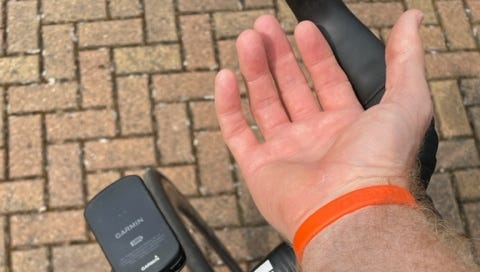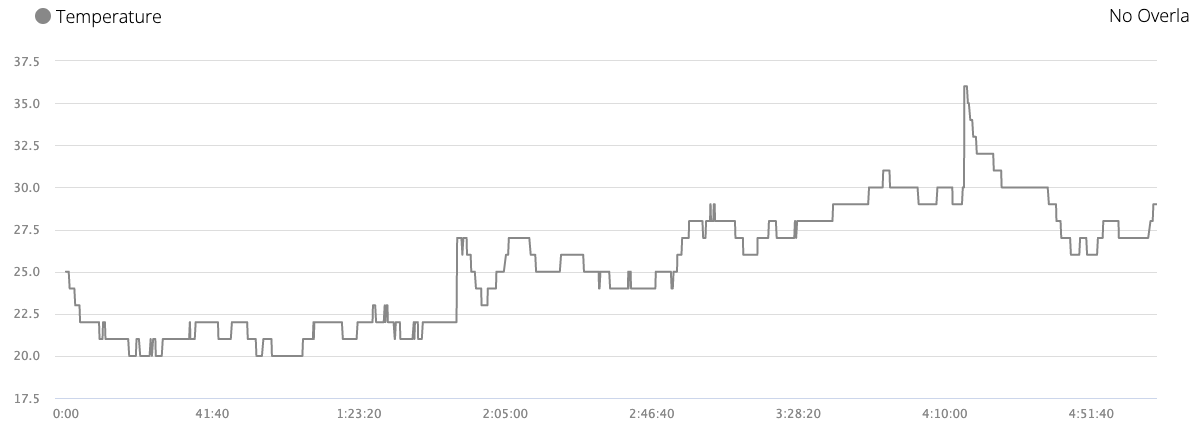How much fluid do we really lose through sweat?
We all know that we need to drink fluids when we exercise because we’ve probably all heard that as we dehydrate our performance drops. But let’s be honest do you really know how much to drink during exercise? What about afterwards? Most of us have no real idea how much fluid you lose through sweat when exercising? This is what drives a new sports wearable data start-up - FlowBio.
My son, Cai, has recently been doing an unpaid work experience internship with them. One of the things he’s been working on is refining a model for predicting sweat loss based off a training session and some key inputs such as energy expenditure, temperature and time. Currently their tech gives you a post workout analysis of your fluid and sodium loss, plus your sweat rate. Based off what they have found post-workout they know how valuable this information could be as a prediction to help athletes stay on top of their fluid intake.
To measure the fluid loss, FlowBio have developed a ‘patch’ that sticks to the underside of your forearm. Patch is probably an under statement. Think of it like a small, rectangular box of plastic, with a circuit board and sticky patch that sticks to the forearm. It’s probably fair to say it’s not the most discrete piece of kit!
Cai brought 2 home so we could test on a long ride. The plan was to ride a 133km at a steady zone 2 for both of us. The route was pretty flat (see elevation below) with only one decent climb.
We each took two 500ml bidons which we knew wouldn’t be enough but we’d top up on route. The temperature was comfortable when we set out in the morning but as you can see from my Garmin reading below got up to some tasty numbers in the afternoon.
At about 2 hours in, at a cafe stop, I managed to catch my FlowBio on my saddle, whilst navigating my bike out of the cafe bike park area. As I continued to ride I could feel it hanging off and not willing to risk the vibrations causing it to drop I removed it. Cai kept his on no problems for the entire ride.
What were the results?
Sadly for me I don’t have complete data having had to remove my FlowBio. However, even the data I got was quite shocking. I have always worked on the basis of needing to drink one 500 ml bidon every hour. For this 5 hour ride, using my normal rough and ready estimate, I should have drunk 2,500ml. I think I ended up probably drinking approx 2,000ml. FlowBio measured my fluid loss at the 2 hour mark as 2,600ml - 100ml more than I had estimated for the entire ride!
Interestingly my Garmin’s estimate of sweat loss for the entire ride was 3,352ml, which is still somewhat below what FlowBio would have recorded for the entire ride based on a reading of 2,600ml at the 2 hour mark.
Fortunately we don’t need to estimate for Cai because he managed to get a full data readout. His FlowBio recorded a fluid loss of 3,720ml over the duration of the ride. I should point out here that FlowBio is measuring over 6 hours. That was the total time we were out (inc stops) but our ride time was actually 5 hours 10 mins.
The ride we did was a zone 2 ride, albeit in hot conditions. If we had done a much harder ride in terms of intensity then our rate of fluid loss would have been greater.
This piece of wearable kit is shedding new light on our fluid loss during exercise. I didn’t expect our fluid loss to be as great as it was. What this data shows us, is that:
(i) many of us do not consume enough fluids during exercise, and
(ii) we should devote greater attention to rehydration afterwards given the rate of fluid loss.
I’ll certainly be thinking about hydration more for my riding and running, with much more emphasis on looking at each particular session I’m planning.
Greg and I interviewed Stefan van der Fluit, co-founder & CEO of FlowBio for the podcast. Click here to listen to the episode.







